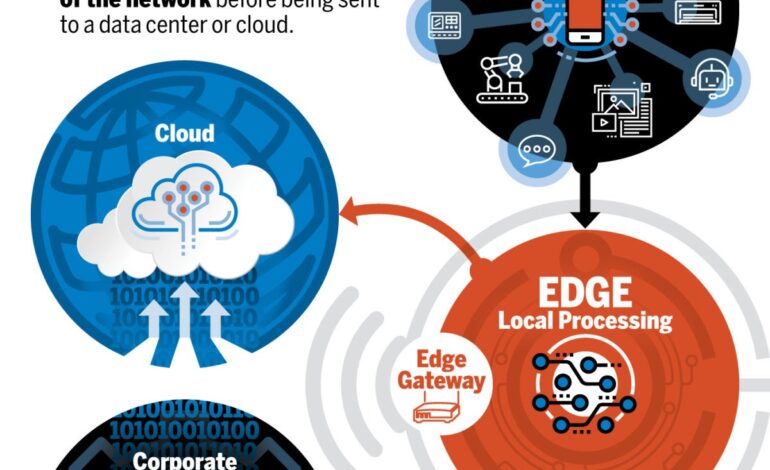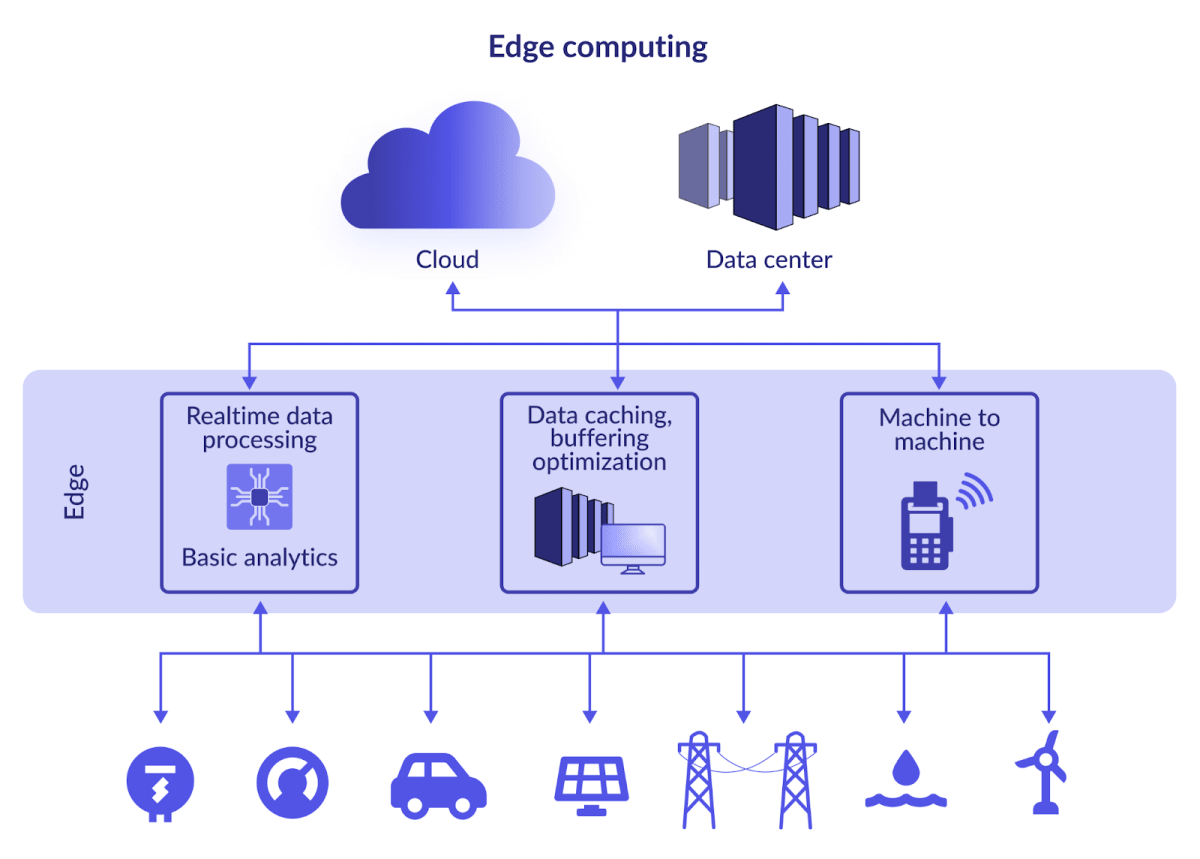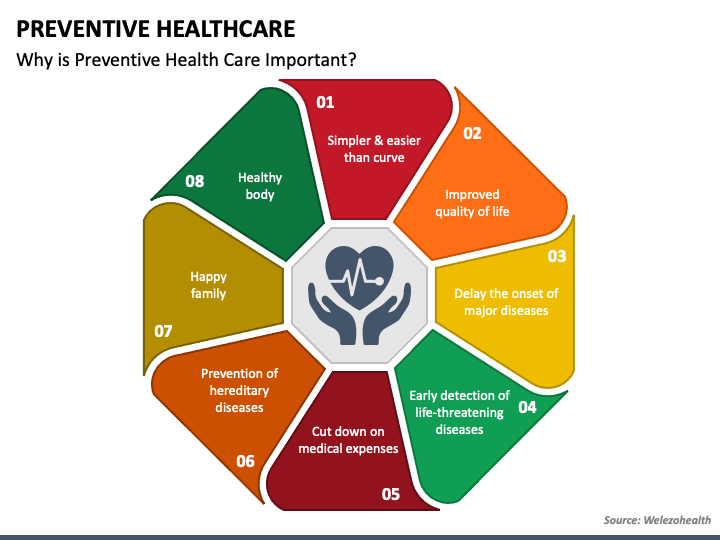Edge Computing: Why It Matters Now

Understanding Edge Computing: Bringing Intelligence Closer to the Source
In today’s increasingly connected world, we generate data at an astonishing rate. From smartphones and smartwatches to industrial sensors and autonomous vehicles, the sheer volume of information being created is overwhelming. Traditionally, this data has been sent to centralized cloud servers for processing and analysis. However, this approach is facing challenges, and a new paradigm is emerging: edge computing. But what exactly *is* edge computing, and why is it becoming so important?
The Limitations of Cloud Computing
For years, the cloud has been the dominant force in data processing. Cloud computing offers scalability, cost-effectiveness, and accessibility. However, relying solely on the cloud has its drawbacks. Consider these issues:
- Latency: Sending data to a distant cloud server and back takes time. This delay, known as latency, can be critical in applications requiring real-time responses, such as autonomous driving or industrial automation. A fraction of a second delay could mean the difference between a safe maneuver and an accident.
- Bandwidth Constraints: Transferring massive amounts of data to the cloud requires significant bandwidth. This can be expensive, especially in remote locations or when dealing with high-resolution video streams. Furthermore, network congestion can further exacerbate bandwidth issues.
- Reliability Concerns: Cloud connectivity isn’t always guaranteed. Interruptions in network connectivity can disrupt operations that depend on cloud processing. This is particularly problematic for applications that need to function reliably even in offline environments.
- Security and Privacy: Transmitting sensitive data to the cloud raises security and privacy concerns. While cloud providers invest heavily in security, the risk of data breaches remains a constant threat. Keeping data closer to its source can reduce this risk.
What *Is* Edge Computing?
Edge computing addresses these limitations by bringing computation and data storage closer to the source of data. Instead of sending all data to a centralized cloud, processing is performed at or near the edge of the network – on devices like sensors, gateways, or dedicated edge servers. Think of it as distributed computing, but with a focus on proximity.
This “edge” can be many things. It could be:
- A server located within a factory.
- A gateway device in a smart city.
- The computer inside a self-driving car.
- Even the sensor itself, if it has sufficient processing power.
The key is that the processing happens *locally*, reducing the need to transmit data over long distances.

How Does Edge Computing Work?
Edge computing doesn’t replace cloud computing; rather, it complements it. Here’s a typical scenario:
- Data Generation: Devices at the edge generate data.
- Edge Processing: The edge device processes the data locally. This might involve filtering, aggregation, or even running machine learning models.
- Immediate Action: Based on the processed data, the edge device can take immediate action, such as adjusting a machine setting or alerting a human operator.
- Cloud Synchronization: Relevant data is then sent to the cloud for long-term storage, further analysis, and model training. The cloud can also push updated models back to the edge devices.
This tiered approach allows for real-time responsiveness at the edge while still leveraging the scalability and analytical power of the cloud.
Benefits of Edge Computing
The advantages of edge computing are numerous:
- Reduced Latency: Processing data closer to the source significantly reduces latency, enabling real-time applications.
- Bandwidth Savings: By processing data locally, edge computing reduces the amount of data that needs to be transmitted to the cloud, saving bandwidth costs.
- Improved Reliability: Edge devices can continue to operate even when cloud connectivity is interrupted.
- Enhanced Security and Privacy: Keeping sensitive data closer to its source reduces the risk of data breaches.
- Scalability: Edge computing allows for more scalable deployments, as processing power can be distributed across a network of edge devices.
- Cost Optimization: Reduced bandwidth usage and optimized resource allocation can lead to significant cost savings.
Applications of Edge Computing
Edge computing is finding applications in a wide range of industries:
- Manufacturing: Predictive maintenance, quality control, and robotic automation. Analyzing sensor data on the factory floor to identify potential equipment failures before they occur.
- Healthcare: Remote patient monitoring, real-time diagnostics, and personalized medicine. Processing data from wearable devices to provide timely alerts to healthcare providers.
- Retail: Personalized shopping experiences, inventory management, and fraud detection. Analyzing customer behavior in-store to optimize product placement and promotions.
- Transportation: Autonomous vehicles, traffic management, and fleet optimization. Processing data from sensors and cameras in real-time to enable safe and efficient driving.
- Smart Cities: Smart lighting, traffic control, and environmental monitoring. Analyzing data from sensors throughout the city to improve resource management and quality of life.
- Telecommunications: 5G and beyond, enabling new services like augmented reality and virtual reality.
The Future of Edge Computing
Edge computing is still a relatively new technology, but it is rapidly evolving. As the number of connected devices continues to grow, and as applications become more demanding, the need for edge computing will only increase. We can expect to see further advancements in edge hardware, software, and networking technologies. The convergence of edge computing, 5G, and artificial intelligence will unlock even more powerful and innovative applications, transforming industries and improving our lives.
Ultimately, edge computing isn’t about replacing the cloud; it’s about creating a more intelligent, responsive, and efficient computing infrastructure that can meet the demands of the modern world.



